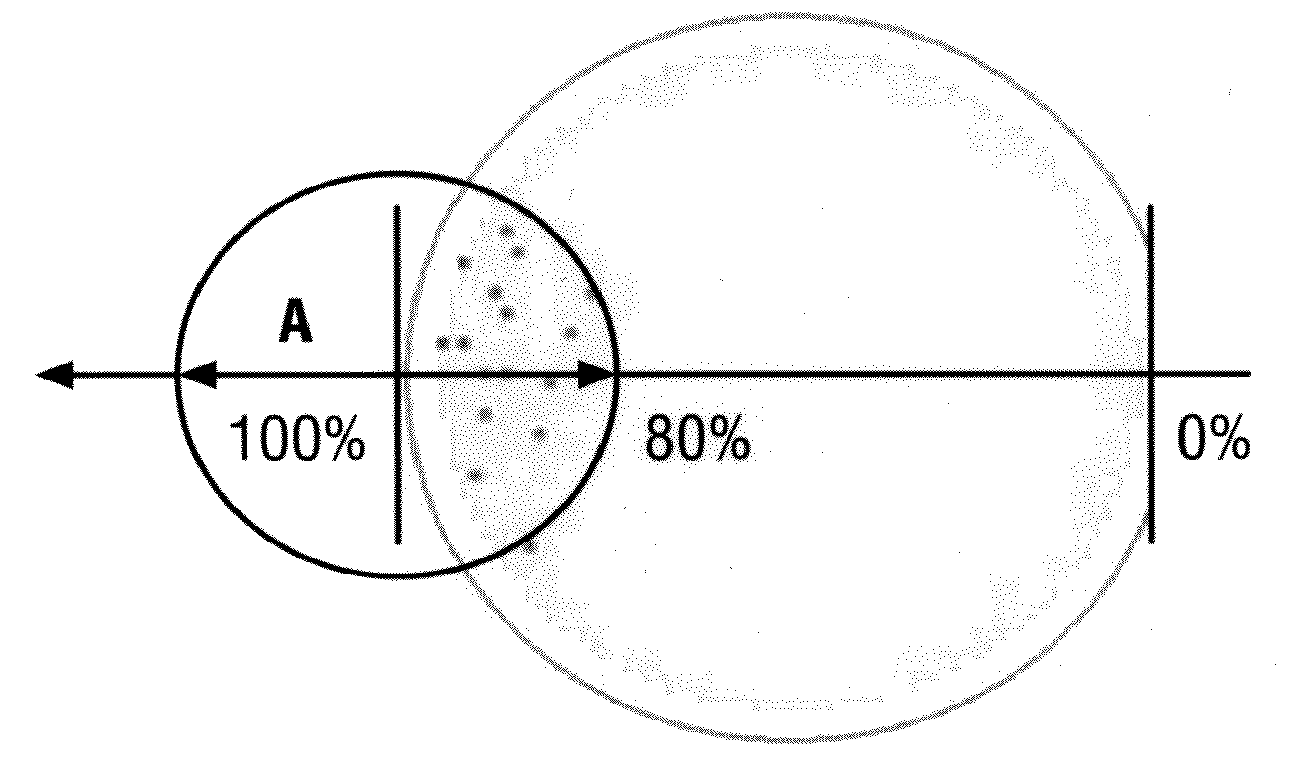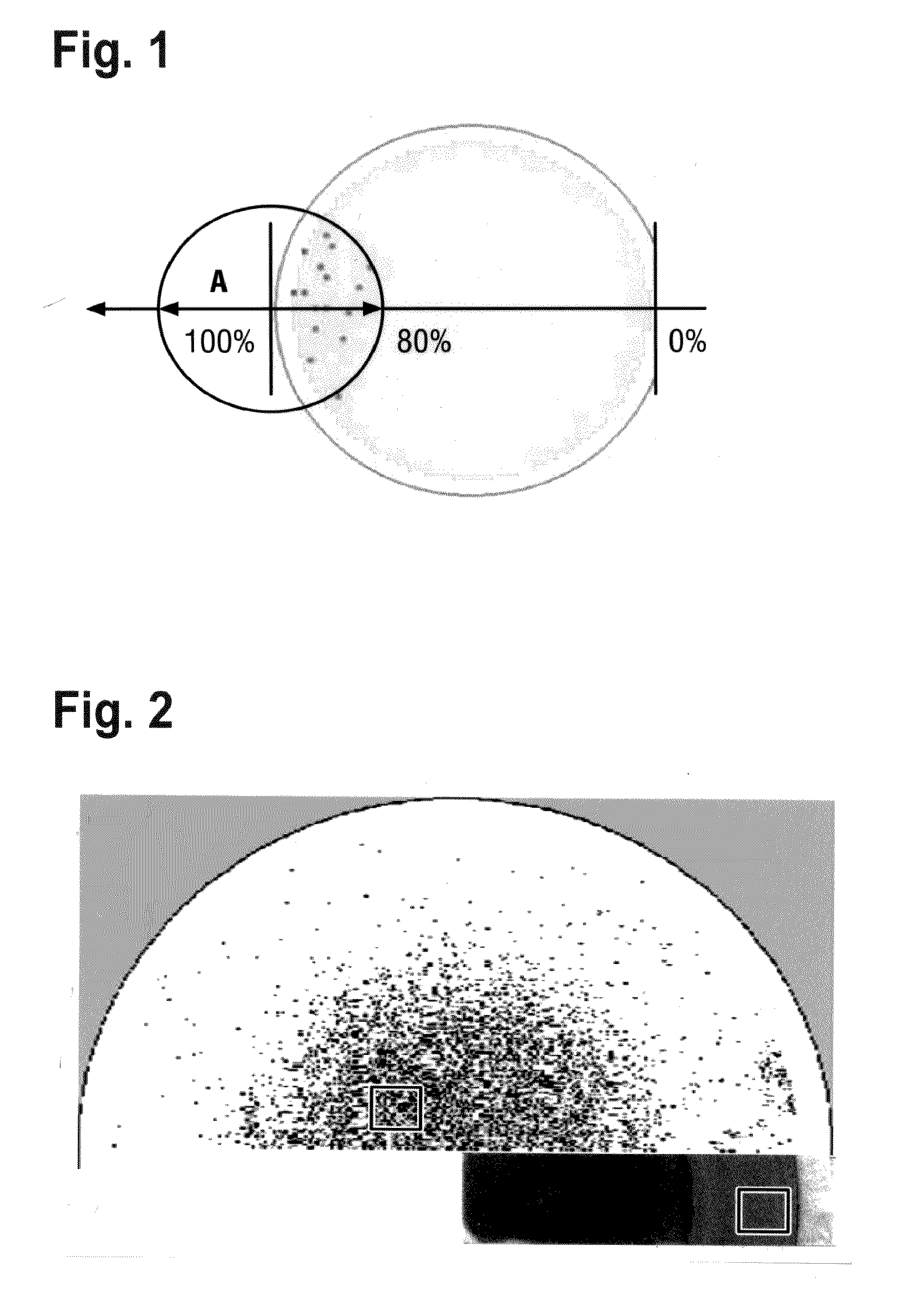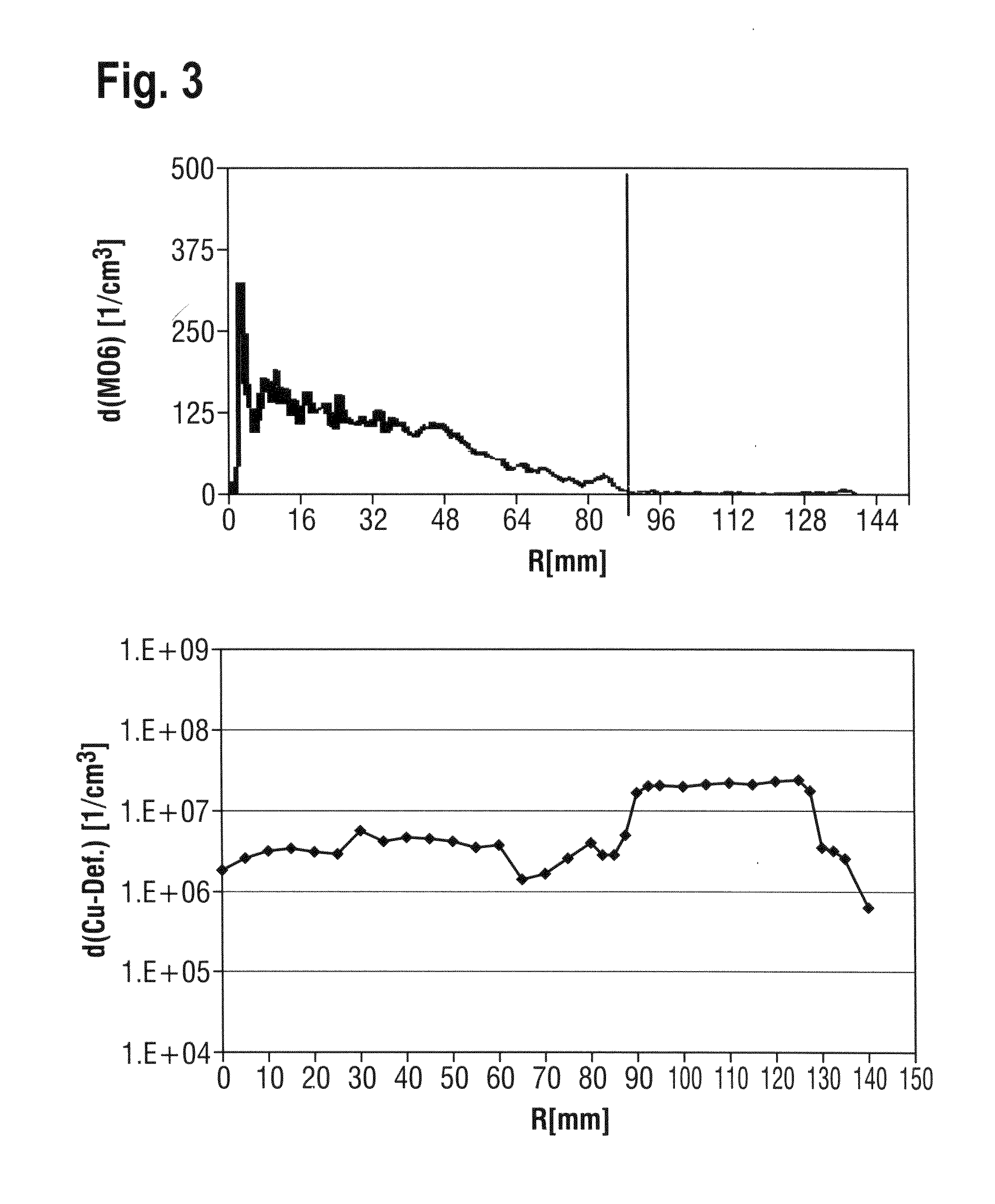Silicon wafer having good intrinsic getterability and method for its production
a technology of monocrystalline silicon and intrinsic getterability, which is applied in the direction of silicon compounds, instruments, and under a protective fluid, can solve the problems of damage to the protective oxide of the memory cell, damage to the function of the electronic components fabricated thereon, and damage to the surface of the wafer
- Summary
- Abstract
- Description
- Claims
- Application Information
AI Technical Summary
Benefits of technology
Problems solved by technology
Method used
Image
Examples
example
[0084]A silicon single crystal was pulled according to the invention by means of the CZ method and cut into wafers according to the prior art. Four wafers at different rod positions were subjected to the heat treatment according to the prior art. Either these wafers revealed the described COP disk in the measurement with MO6, or they were COP disk-free and according to the Cu decoration technique revealed defects over the entire wafer or at least in zone of 80% of the radius, as measured from the wafer edge (FIG. 14). The heating rates for the heat treatment were selected as follows: 500-700° C.: 5 K / min; 700-900° C.: 4 K / min; 900-1000° C.: 3.5 K / min; 1000-1050° C.: 2 K / min; 1050-1100° C.: 1 K / min. The cooling rates corresponded to the heating rates indicated for the respective temperature ranges.
[0085]FIG. 15 shows the result of a radial BMD measurement by means of SIRM. The left-hand value in the legend stands for the interstitial oxygen concentration [Oi] in the silicon wafer bef...
PUM
| Property | Measurement | Unit |
|---|---|---|
| size | aaaaa | aaaaa |
| size | aaaaa | aaaaa |
| total length | aaaaa | aaaaa |
Abstract
Description
Claims
Application Information
 Login to View More
Login to View More - R&D
- Intellectual Property
- Life Sciences
- Materials
- Tech Scout
- Unparalleled Data Quality
- Higher Quality Content
- 60% Fewer Hallucinations
Browse by: Latest US Patents, China's latest patents, Technical Efficacy Thesaurus, Application Domain, Technology Topic, Popular Technical Reports.
© 2025 PatSnap. All rights reserved.Legal|Privacy policy|Modern Slavery Act Transparency Statement|Sitemap|About US| Contact US: help@patsnap.com



